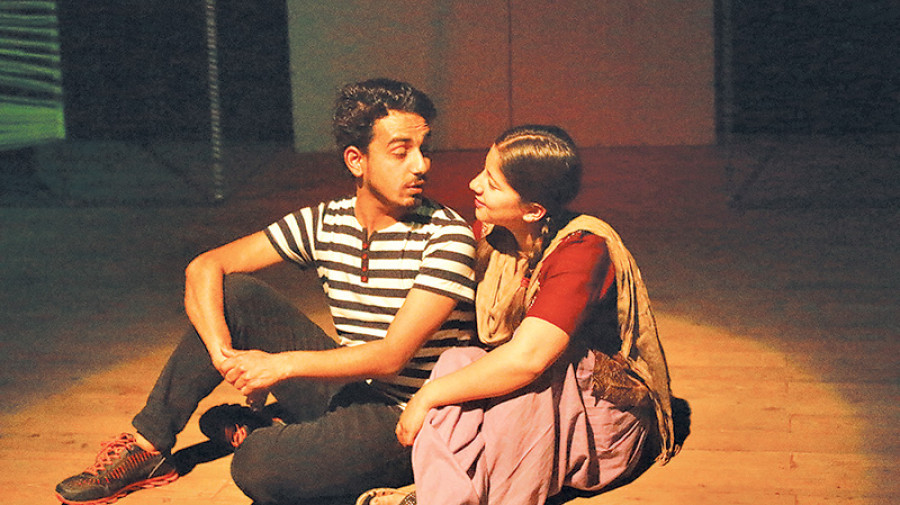Miscellaneous
Of the oppressed and the oppressors
A boy meets a girl. They fall in love. They are of different castes. Their families do not accept their relationship. They run away. Conflict escalates. Finally, the lovebirds return home. The family continues to reject their union. Having exhausted all seemingly possible options, the pair commits suicide.
Timothy Aryal
A boy meets a girl. They fall in love. They are of different castes. Their families do not accept their relationship. They run away. Conflict escalates. Finally, the lovebirds return home. The family continues to reject their union. Having exhausted all seemingly possible options, the pair commits suicide.
Sounds familiar? This oft-repeated formula has formed the spine of countless movies, plays, novels and short stories over the years—the proverbial dead horse continually flogged to redundancy. Yet, once again, the familiar plot rears its familiar head in Raj Shah’s Bukhyancha Mann; but is it any different?
As you enter Sarwanam Theatre, where the play is currently being staged, you are greeted by the unfamiliar sight of a pair of plump scarecrows lined up along the stairway, giving the audience a foreshadowing of what the director is trying to disseminate through the play. But that is where the novelty ends. The rest of the play follows the hackneyed plotline, without offering insights or character depth to further the narrative.
Here’s what I discerned from the plot. Kaji Birbahadur (Rinex Basnet) and Dhanbahadur (Raj Shah) are two friends and have somewhat of a love-hate relationship, something you could liken to Dhanjine and Gumane of Guru Prasad Mainali’s Chhimeki. The fact that Dhanbahadur belongs to a low caste has not put a damper on their friendship and that he has even helped Kaji in times of need. Occasional fights aside, the duo have what can be termed a ‘model’ friendship. As time wears on, Kaji and Dhanbahadur grow into adults, with family and kids. Dhanbahadur ekes out a living as a tailor (damai), while Kaji is busy being Kaji. One day, however, in an unforeseen turn of events, Kaji’s daughter elopes with Dhanbahadur’s son. What’s more, the already weakening relationship between the Kaji and Dhanbahadur sours further. The couple returns home eventually in hopes their liaison would be accepted only to be turned down.
Well, what is it that distinguishes a news story from a short story, a documentary from a feature, a drama from reality?

Bukhyancha Mann is bereft of any resolute function, except for it tries to express itself as a simulacrum of reality, of the struggle endured by “lower-classes.” Given that it bases itself on such a familiar social ill, which is punishable by law, I had expected it to offer a convincing reasoning of its own as to what the problems are, physical, psychological, or at least, to what has led to the problem. But it turns mute in these regards. The play could’ve used a couple of monologues that would explain the problems those sorry victims of social injustice are compelled to endure.
If there’s one thing that saves Bukhyancha Mann from becoming just another blander version of reality, it’s the fairly imaginative sets and props. The set is fenced by threads, a reference to Dhanbahadur’s tailoring profession; the lighting, carefully designed, help you navigate the shift in the mood. The efforts the actors have put together is also admirable. But when it comes to casting, you wonder if the two leads had swapped their roles. Would Dhanbahadur, who wears a pompous mustache, have better represented Kaji and vice versa?
Set in the Gandak region, the play makes use of the traditional soraya dance, and dohori music popular in the region, and some panche baaja in between. Moreover, the rendition of dialogues is up to the mark, corresponding the language and accent used in the region, which for me, as someone who hails from the region, was a fascinating Easter egg. These are things that try to make up what the narrative lacks—barely succeeding.
Towards the end, Bukhyancha Mann does try to offer a resolution. The director’s statement states that the play is a satire on those who although are human carry the hearts of scarecrows and that the main motive of the play is to gauge whether one, being human, can live in the society of humans. And then Dhanbahadur, in a final sequence, muses: We are living merely as scarecrows in this society, heartless, emotionless scarecrows. But then, given the meandering plot, it sounds a bit too far-fetched.




 12.12°C Kathmandu
12.12°C Kathmandu










